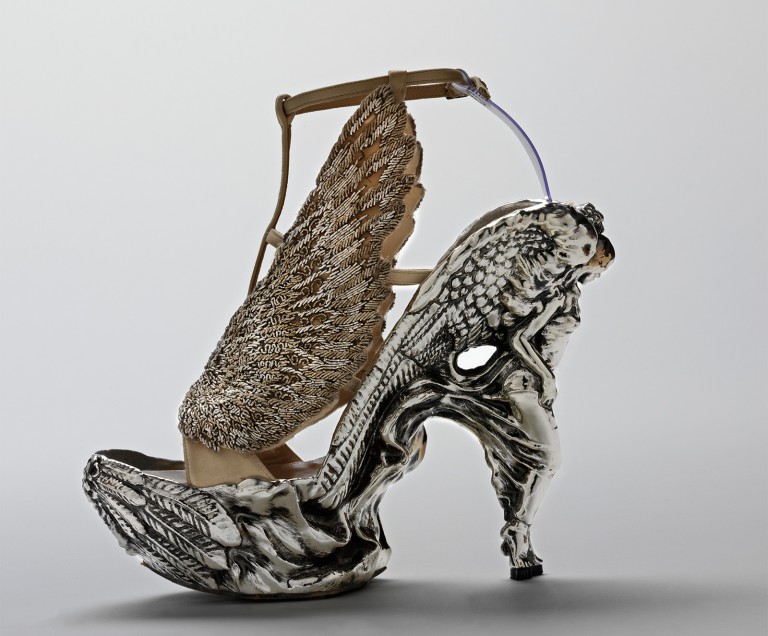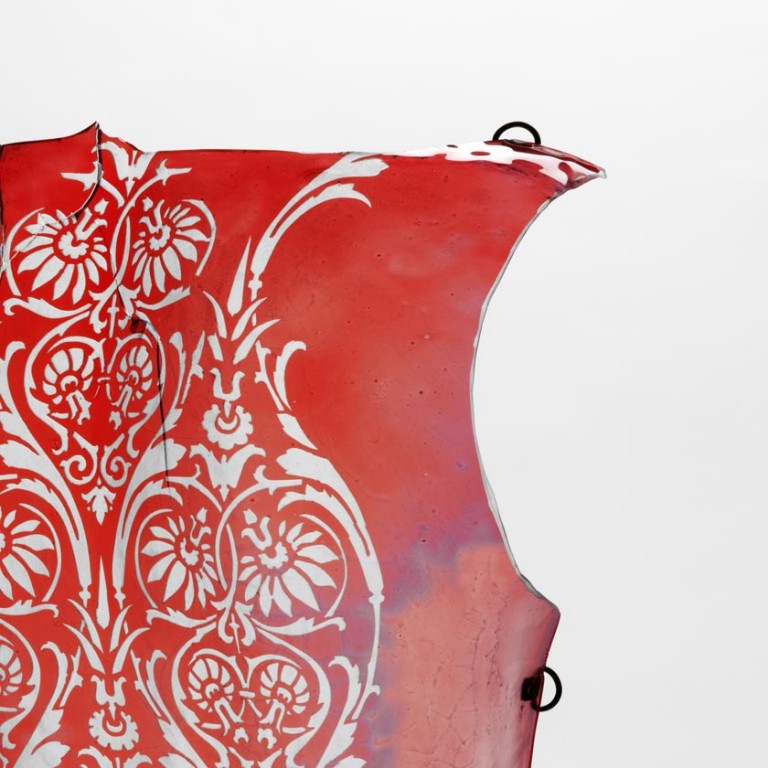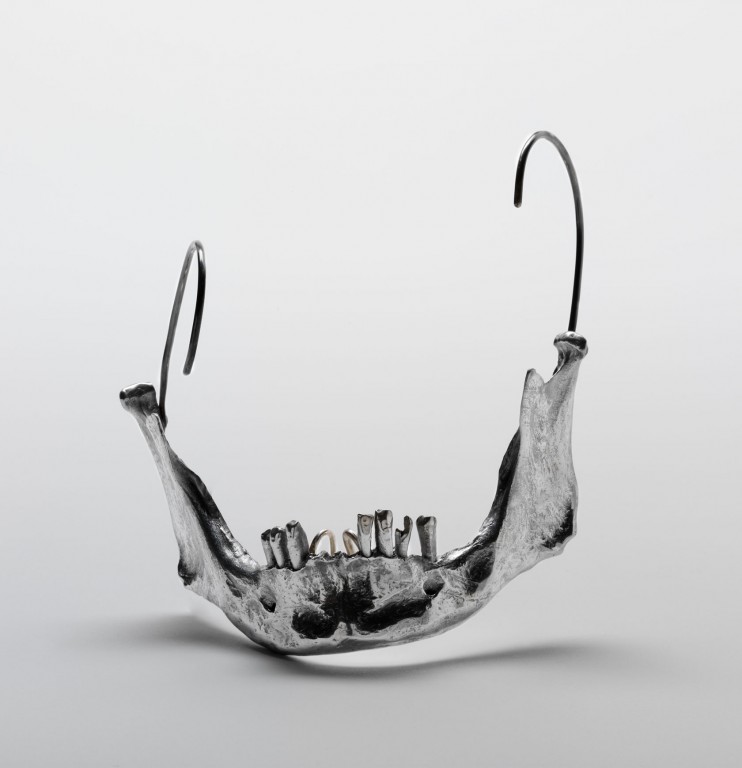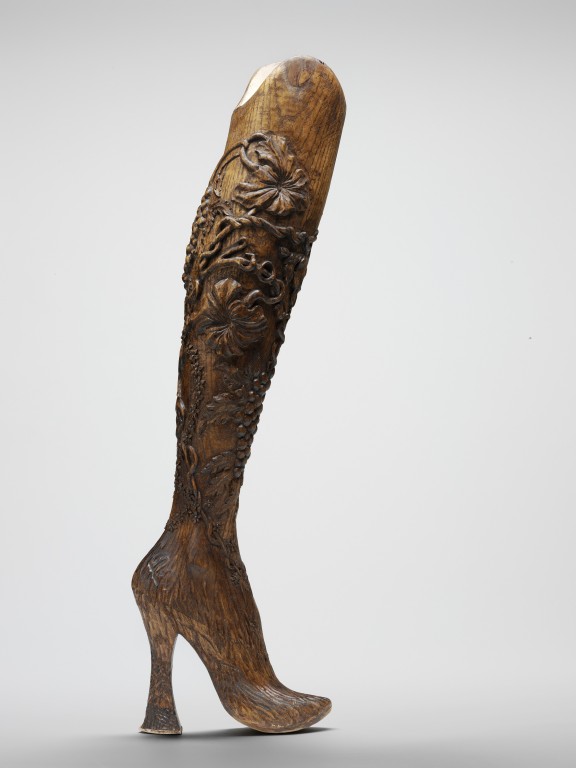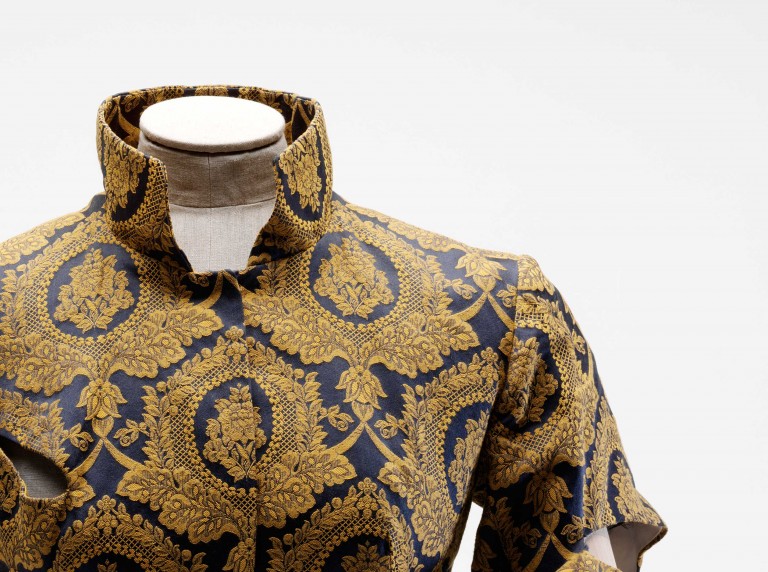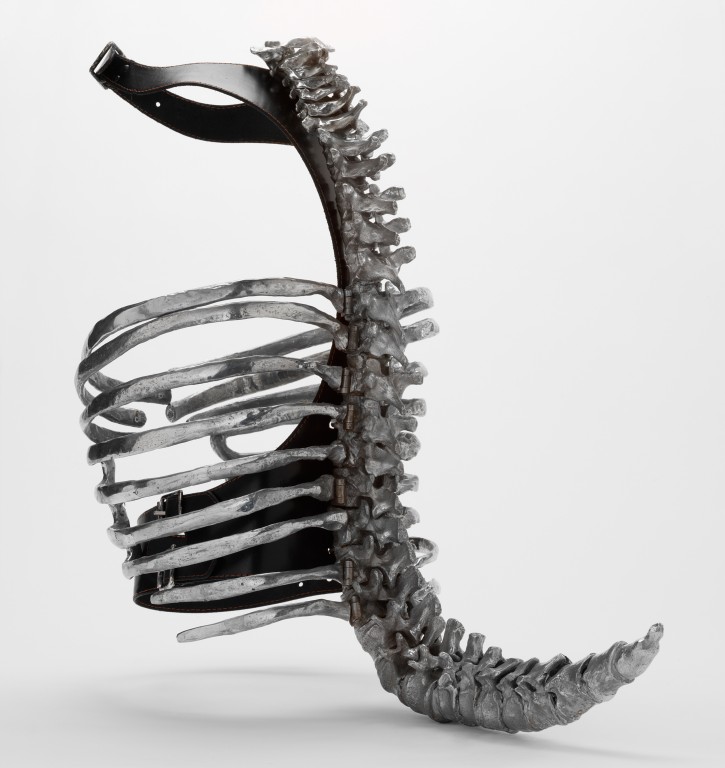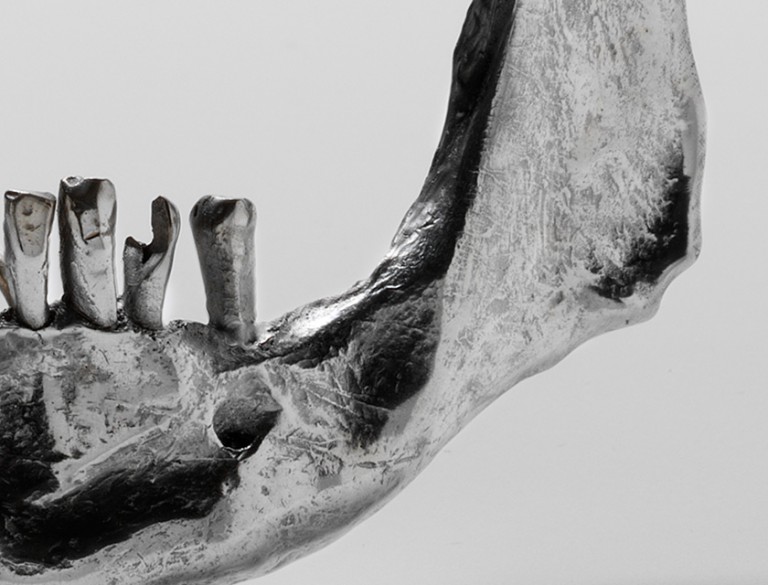‘Spine’ corset
The ‘Spine’ corset is one of the most notable examples of McQueen’s collaboration with Shaun Leane which resulted in radical but beautiful jewellery and body sculpture.
Both designers shared a preoccupation with human anatomy. McQueen was fascinated by the spine and had previously used cut and construction techniques to elongate and beautify the body with his ‘Bumster’ trousers. The aluminium ‘Spine’ corset mimicked the spine’s structure and armoured the body with a sinister, even sadomasochistic aesthetic. The construction of this large body piece was complex, and Leane used a human skeleton to cast the corset, crafting each bone by hand. The corset fastened like armour with three black leather buckle-straps. On the catwalk, it was worn on top of a black, glittering dress. The corset is one of several designs which demonstrate McQueen’s interest in hybridity, that is, part-human, part-animal beings. McQueen had asked Leane to include a tail on the spine after watching Richard Donner’s horror film The Omen (1976), in which a jackal gives birth to a child. Other examples of McQueen incorporating the human skeleton into his designs are seen in his textile prints, tailored jackets and jewellery in It’s a Jungle Out There (Autumn/Winter 1997), Eshu (Autumn/Winter 2000), The Widows of Culloden (Autumn/Winter 2006), Natural Dis-tinction, Un-natural Selection (Spring/Summer 2009) and Plato’s Atlantis (Spring/Summer 2010).
The ‘Spine’ corset also draws on the rich tradition of memento mori, in which skeletons and skulls are incorporated into wearable garments or jewellery to remind the wearer of their own mortality. Another designer who was inspired by the skeleton was Elsa Schiaparelli, who in 1938 designed the ‘Skeleton dress’ in collaboration with the Surrealist artist Salvador Dali. The black, fitted evening dress has internal padding which imitates the skeletal structure of the spine, ribcage, collarbone, arms, hips and legs. Controversial for its time, the dress was considered an offence against good taste.

